Helium burning
Introduction
Helium burning is a nuclear fusion process that occurs in the core of massive stars, where helium (He) is transformed into carbon (C) and oxygen (O). This process is a key stage in the stellar nucleosynthesis, the process by which stars synthesize heavier elements from lighter ones.
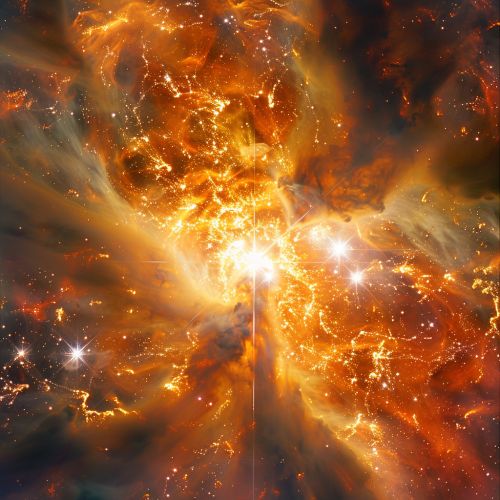
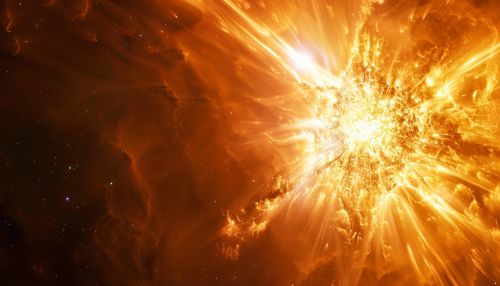
Stellar Nucleosynthesis
Stellar nucleosynthesis is a collection of nuclear processes that take place in stars to build the nuclei of the heavier elements. The original chemical elements, primarily hydrogen and helium, are transformed into heavier elements via nuclear fusion reactions in the stars' cores.
During the helium burning phase, the core temperature of a star must reach approximately 100 million Kelvin for the fusion of helium to occur. This is due to the Coulomb barrier, a form of potential energy that must be overcome for two nuclei to undergo a nuclear reaction.
Triple-alpha Process
The primary mechanism for helium burning is the triple-alpha process. This process combines three helium-4 nuclei (alpha particles) to form a carbon-12 nucleus. The triple-alpha process is highly dependent on the temperature and density of the star's core and is only efficient at high temperatures and pressures.
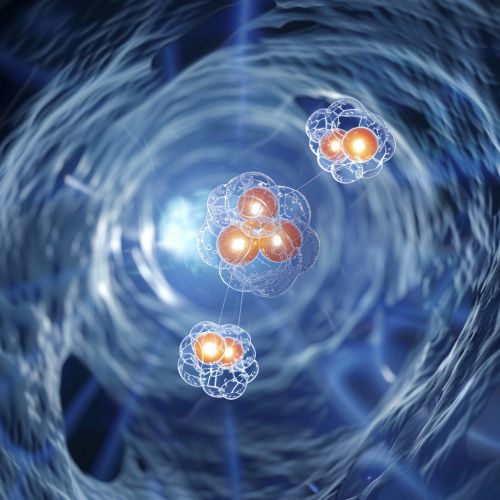
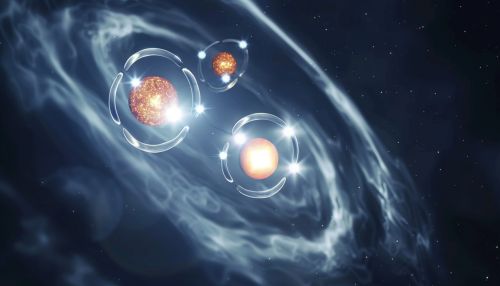
Carbon Burning Process
Once a star has converted a significant portion of its core helium into carbon, the core contracts and heats up, initiating the carbon burning process. This process fuses carbon nuclei to form heavier elements such as neon, magnesium, sodium, and aluminium.
Helium Flash
In low-mass stars, helium burning begins with a dramatic event known as a helium flash. This occurs when the core of a star becomes degenerate – a state of matter where the star's core is supported against gravitational collapse by quantum mechanical effects rather than thermal pressure.
Helium Burning in Binary Star Systems
In binary star systems, helium burning can lead to unique phenomena. If one star in a binary system is a white dwarf, it can accrete helium from its companion star. This accreted helium can ignite in a runaway nuclear reaction, leading to a type of supernova explosion known as a Type Ia supernova.
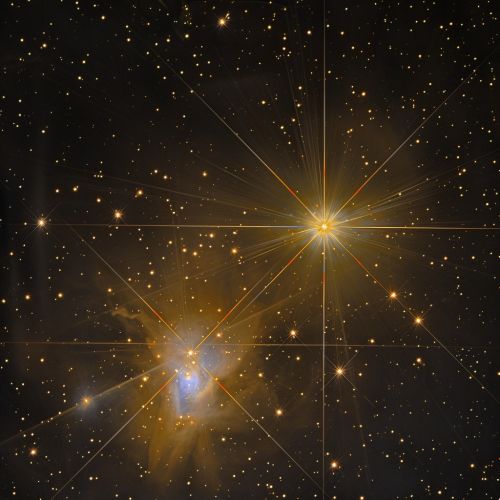

End of Helium Burning
The end of helium burning marks a critical point in a star's life cycle. Once the helium in the core is exhausted, the core contracts and the temperature and pressure increase until carbon burning can begin. This marks the beginning of the advanced stages of stellar evolution, leading to the formation of heavier elements and, eventually, the death of the star.
